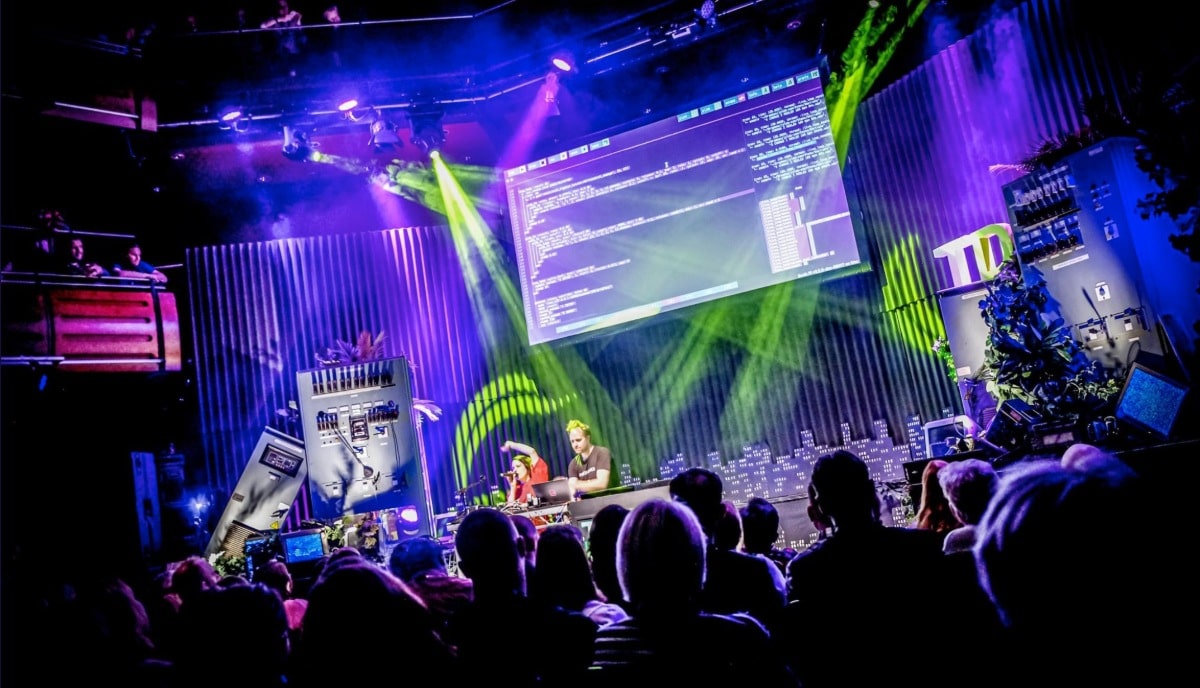I worked a couple of years ago on a open source project called Sonic Pi. This software was the brainchild of Dr Sam Aaron from Cambridge University and a number of us worked on developing it into a code based music creation and performance tool. It was originally intended to be used in education to teach elementary and secondary kids to code by doing something interesting like creating EDM beats from their code. Sonic Pi while a great learning tool for students is also powerful enough for professional musicians. Here is Dr. Sam at a performance at a Education Conference Party.

When using tools like Sonic Pi, SuperCollider and Kangmeister to create EDM music and perform it, it is often called an Algoraving. An Algorave is an event where people dance to music generated from algorithms, often using live coding techniques. Algoraves can include a range of styles, including a complex form of minimal techno, and the movement has been described as a meeting point of hacker philosophy, geek culture, and clubbing.
Although live coding is commonplace, any algorithmic music is welcome at an Alograve which is “wholly or predominantly characterized by the emission of a succession of repetitive conditionals or beats”, which is basically the definition of rave music. Although Algorave musicians have been compared with DJs, they are in fact live musicians or improvisers, creating music live, usually by writing or modifying code, rather than mixing recorded music.
I find it a lot of fun and have done a number of live performances using it in Virtual Worlds at concerts. The following is a tutorial and a performance that I did for a weekly show called “The Music Nerd” that I do. During actual concerts I often cut and paste in code that I have previously built as I just can’t type fast enough to keep it interesting for the audience. Like most live synthesis and improvisation I spend a lot of my time while performing changing parameters of the synth sound or effect on top of the sound to generate interesting music.
This approach is also a big part of my sound design toolkit. I find it easier to code the underlying sythesizers than tweak knobs on my software synths. But, of course I am a programmer …. lol. Here is about an hour long tutorial from me that you may find interesting. Feel free to jump around it if you are interested in hearing the beats, rather than learning about the software itself. Let me know what you think of it. You can download it and try it yourself for free! Enjoy.